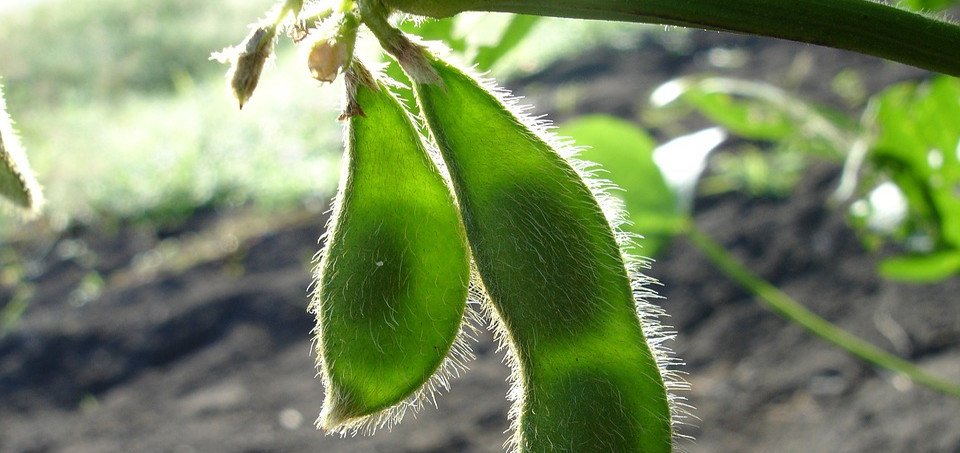Soybean SPF
Soybean protein fiber (SPF) has different physical and chemical constructions from natural protein fiber. One must therefore take care of the pretreatment, be very careful in the process of pretreatment, dyeing and finishing, keep the style and character of SPF to embody the high quality of it. During the production process, select fit equipment and proper settings.
1. DE-SIZING
Pretreatment of soybean protein fiber/yarn is very simple. One uses scouring and bleaching: it can remove oil, lubricants and pigments and other additives which are added in the production process. Woven fabric, knitting (including all kinds of blended SPF with other fiber), one should select different equipment and settings.
All fabrics (woven fabric and knitting) need desizing - it can be done with enzyme de-sizing, alkali or oxidant de-sizing . Mercerization is forbidden because SPF is unable to bear the strong caustic soda.
Enzyme de-sizing:
- BF7658 amylase: 2-6g/L
- Glauber's salt: 2-3g/L
- Penetrating agents: 1 g/L
- Temperature 55-60 degr C
- Heat-preserving time: 60 minutes
SPF blends containing different fibers the de-sizing process is very different. one should consider the other fibers characteristics and adjust the settings accordingly. De-sizing process must be appropriate for both fibers.
2. SCOURING AND BLEACHING
The natural color of SPF is curcuma - it is difficult to remove SPF's pigment - therefore one should bleach it. According to color, you can use Hydrogen peroxide bleaching, reduction bleaching, or Hydrogen peroxide bleaching and reduction bleaching. If you need very light color you may have to use whitening agents (whitened SPF fabric is never completely white like bleached cotton fabric for a comparison - it is still a little yellow).
3. BLEACHING
3.1. Hydrogen peroxide bleaching (middle or deep colour)
Recipe:
- Hydrogen peroxide: 20-40 g/L
- Sodium carbonate: 2-4 g/L
- scouring agents: 1-2 g/L
- pH degree: 11
- bleaching teampreature: 92-95°C
- heat-preserving time: 60-80 minutes
3.2 Reduction agent bleaching
Recipe:
- Rongalite: 3-8 g/L
- Sodium carbonate: 2-4 g/L
- scouring agents: 1-2 g/L
- pH degree: 11
- bleaching teampreature: 92-95°C
- heat-preserving time: 60-80 minutes
If you need a medium or light colour, you should use Hydrogen peroxide bleaching and reduction bleaching. Wash clearly after Hydrogen peroxide treatment.
3.3 Whitening
For dyeing very light colour, you should use whitening after Hydrogen peroxide bleaching and deuction bleaching.
Recipe:
- brightener: 0.3-0.8 g/L
- Glauber's salt: 5-15 g/L
- whitening temperature: 70-80°C
- heat preservation time not less than 30 minutes
3.4 Comparison of brighteners
Brightener recommendation:
- Korea 4BK
- Guangdong China CBN-20
- Shanghai Daxiang PAB.DM
- Reference: BW-O2A, CPD, PA2B, Shanghai Daxiang BYB. BY.
- Note: VBL.DT is not fit to whiten soybean protein fiber
4. BLEACHING METHOD
Including fiber bleaching, top bleaching, yarn bleaching (hank yarn bleaching, cheese bleaching), fabric bleaching, according to different product condition and the requirements we use different methods. It is highly
recommended to carry out a small test before mass production. Above all recommendations and processes are for your general guidance only.
Hank Yarn Bleaching
Yarn surface is easy to become disordered.
Cheese Bleaching
The surface is bright and clear, efficient, but you must care for elasticity of cheese. If winding is too tight, the dye-solution is hard to penetrate (the shrinkage of soybean yarn is about 7% during process), or the result in the whiteness degree or dyeing will not be level. If it is too loosely wound the dye liquor can easily penetrate, the whiteness degree is very consistent and level. Same with dyeing. The elasticity of the cheese is very important, directly affect bleaching and dyeing quality.
Moreover, if bleaching temperature is too high, it will influence resilience. The fiber will lose resilience so that hand feeling becomes rigid if the bleaching temperature exceeds 95°C.
5. PRETREATMENT OF FARBICS CONTAINING SPF AND BLENDS WITH WOOL OR CASHMERE
Pretreatment of blended fabric need to protect both fibers, and avoid potential damage. Only then wool fiber will develop flexibility, and develop the soybean soft hand feeling and elegant outstanding luster at the same time. Soybean
fiber can bear alkaline better than wool, if pH exceed 8, temperature above 80°c , wool fiber will turn yellow ,and drop tenacity.
But soybean fiber has pigment, that is difficult to be removed. One has to keep it in pH 9.5 - 10.5, temperature 90 - 95°C, and then you can acquire ideal whiteness degree.
To solve this conflict, we suggest:
1) You must use separately pretreatment and bleaching (dyeing) on Soybean fiber, wool fiber, or top, yarn, then blending or color weaving.
2) During the pretreatment and bleaching
Firstly consider to insure reducing harm of wool fiber, and develop the good function of two fibers, scouring and crabbing. The bleaching craft remove the pigment of soybean fiber, and we recommend to use Hydrogen peroxide bleaching , adopt England the low temperature Hydrogen peroxide activator TAED, and process is in the temperature 70 - 75°C in weak alkali bleaching, attain currently white degree
6. PRETREATMENT OF SPF AND SILK INTERTEXTURE
The key problem of pretreatment is to remove impurities, such as the sericin etc. as well as increasing the white degree of soybean fiber. For this, one can use the alkaline Proteolytic enzyme.
- Tinogym WSCL Ciba Speciality Chemicals Inc.: 0.5-1 g/L
- pH degree: 9 - 9.5 (adjusted with alkali)
- temperature: 55°C
- time: 45 minutes
Note: Removing sericin with Proteolytic enzamye before scouring and bleaching.
- Hydrogen peroxide: 5-6 g/L
- BAC (stabilizer): 2 g/L
- wetting penetrating agents: LUN 1g/L
- pH degree: 8-9 (adjusting with sodium carbonate)
- temperature: 90°C
- time: 45 - 60 minutes
PROCESS
Process A:
- gray goods
- pretreatment
alkaline Proteolytic enzyme
removing Sericin - Scouring and bleaching
- Whitening
- Pressing water
- Dyeing
- Softening
Process B:
- gray goods
- alkaline and hydrogen peroxide bleaching
removing sericin - washing
- reduction bleaching
- whitening
- pressing water
- dyeing
- softening

